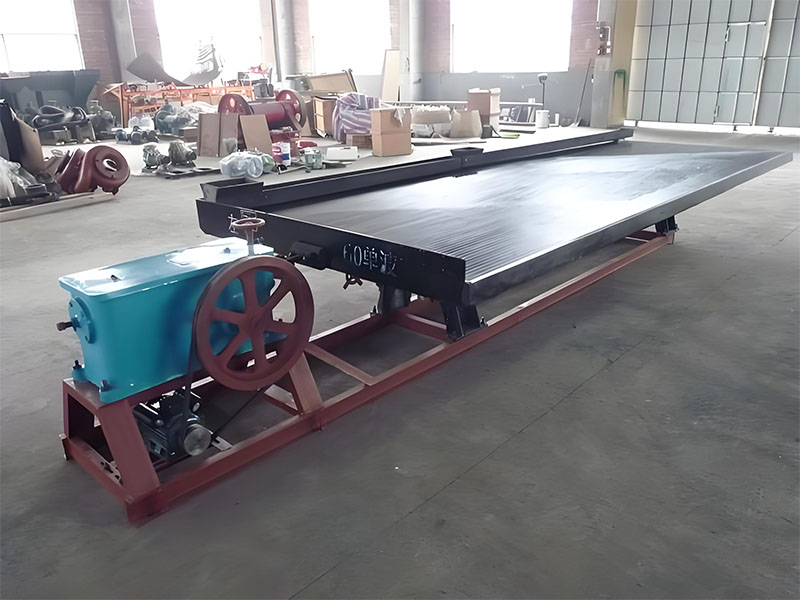
Shakers are basically small capacity machines that are used as the final step in the mining process. A shaker is a thin-film, shear-flow processing hardware that separates particles of its nourishing substance based on their specific gravity, size, and shape. Mineral-rich particles, from light to large, from fine to coarse, arranged by net effective weight.
It is a gravity wet mining machine with a table deck reinforced by glass fiber and a surface of wear-resistant corundum. The mining shaker table consists of three parts: the table head, the table deck, the bearing and the adjustment slope.
Shaker is widely used to separate gold, tin, tungsten, chromite, silver, diamond, zircon, tantalum niobium, lead, zinc, copper and other rare metals and precious metal ores.
The working principle of the shaking table is to use the different proportions and specific gravity of the heavy material and the light material to separate, and under the action of gravity, the ore is divided into concentrate, middle ore and tailings.
The outstanding advantage of ore shaking table is the accuracy of sorting. The concentration rate of the concentrate is very good, the recovery rate of various heavy minerals can reach more than 95%, and the enrichment rate can reach about 300 times when dealing with low-grade tungsten ore and tin ore.
At the end, the mashed or ground mineral material is mixed with water as feed to form a paste (slurry) and transported to the top layer of the workbench deck as a normal slurry of about 20-25% of the weight of the solid. The deck of the gold watch has an equal movement, along with its basic pivot, which is made use of a vibrator or unstable head movement.
The table surface is made and installed with a few narrow stripes, usually made of ponderosa pine, dated from the past, low thickness polyethylene or aluminum surfaces. Shakers and other thin-film separation devices recover well separated gold under conditions of subcritical and supercritical laminar flows, which may happen just where there is a thin layer of liquid depth.
The ripple of a gold shaker decreases downward in the upward path, and the gold and all the heavy matter and precious metals are concentrated and released to the end of the table. This allows the mineral particles to move laterally to the pivot or shaker line of the table, thus contributing to the separation of the entire length of the table. Select the shape and pattern of the rifling according to the desired and desired function.

 Beneficiation table-Mining Machinery-Jiangxi Mingxin Metallurgical Equipment Co., Ltd.
Beneficiation table-Mining Machinery-Jiangxi Mingxin Metallurgical Equipment Co., Ltd.